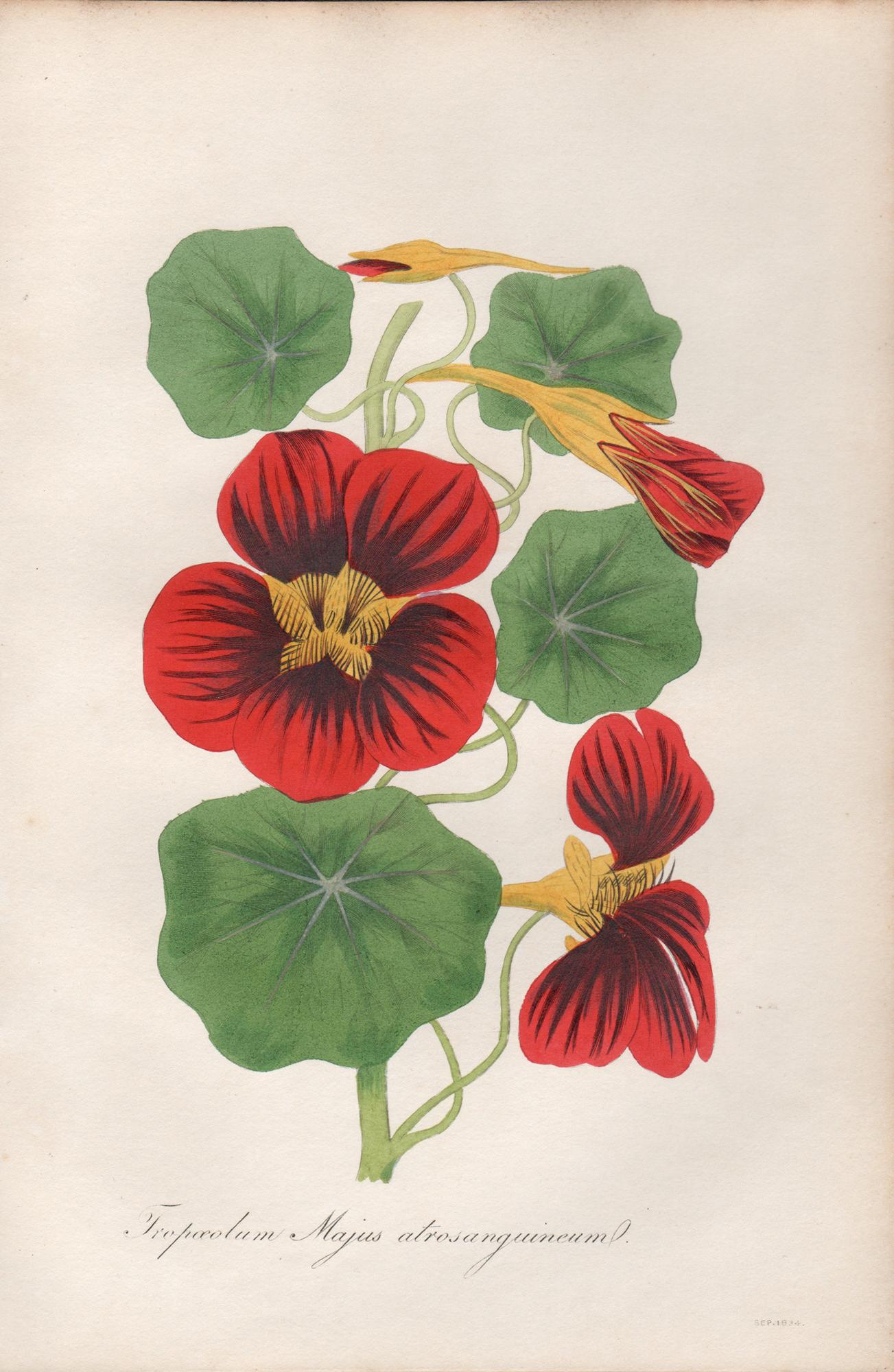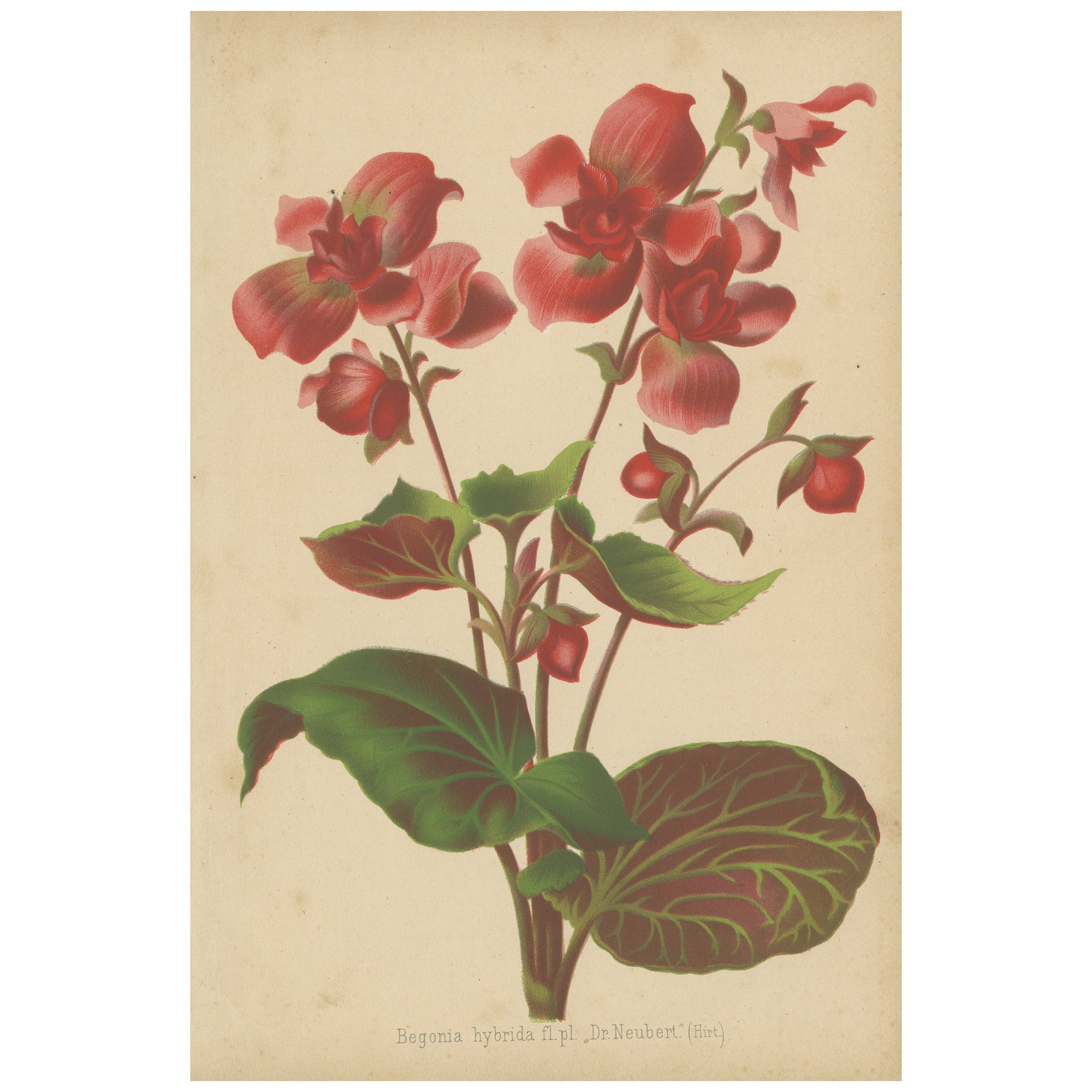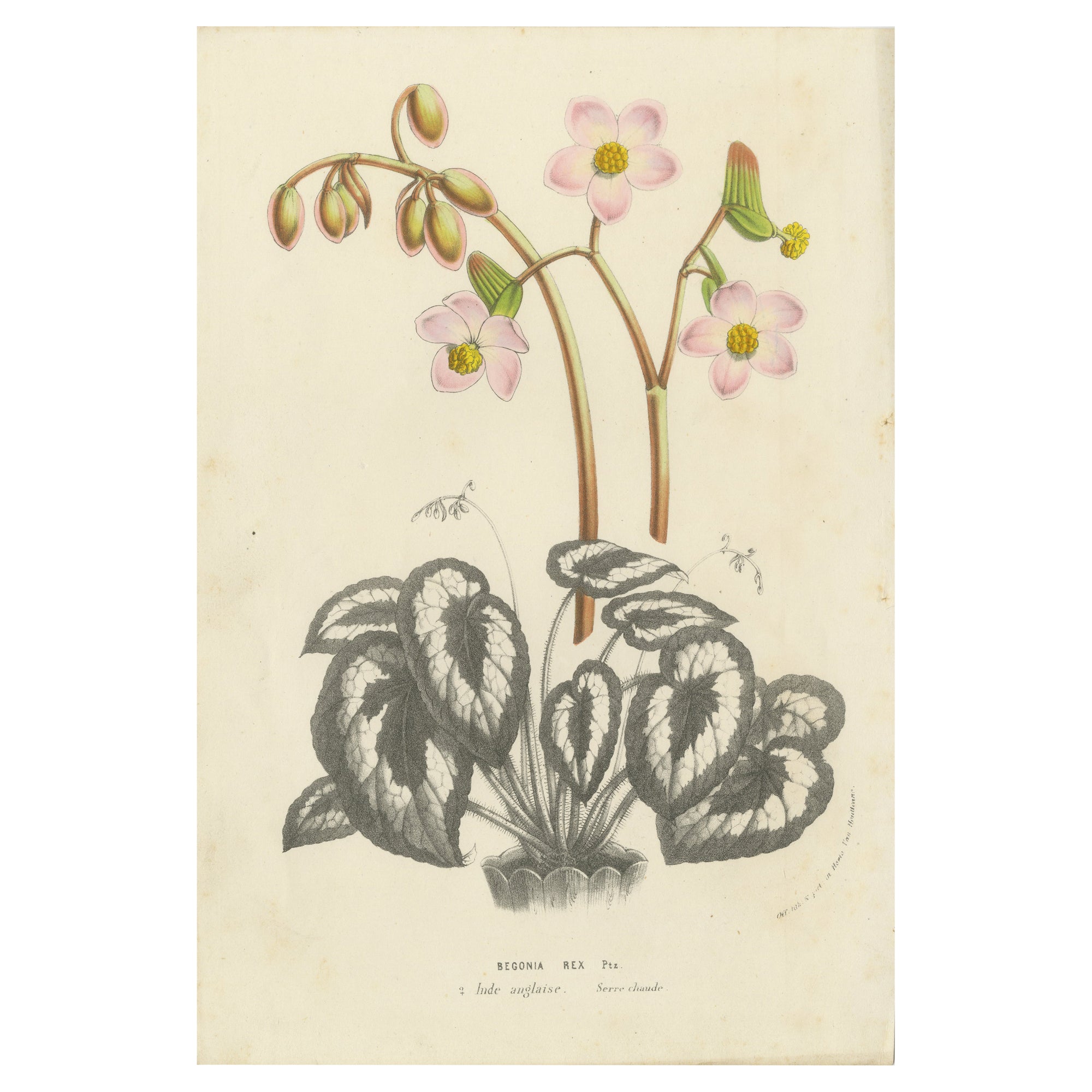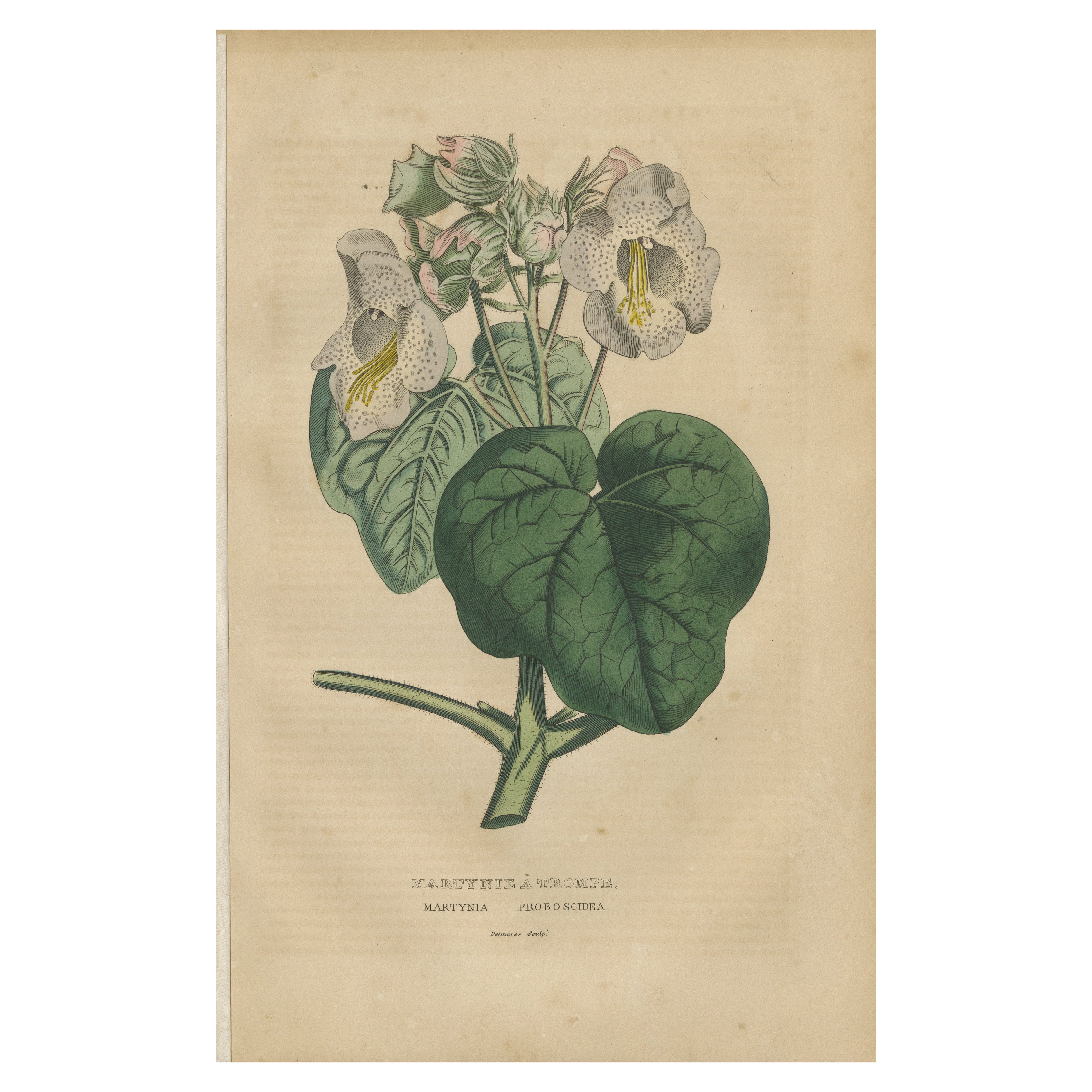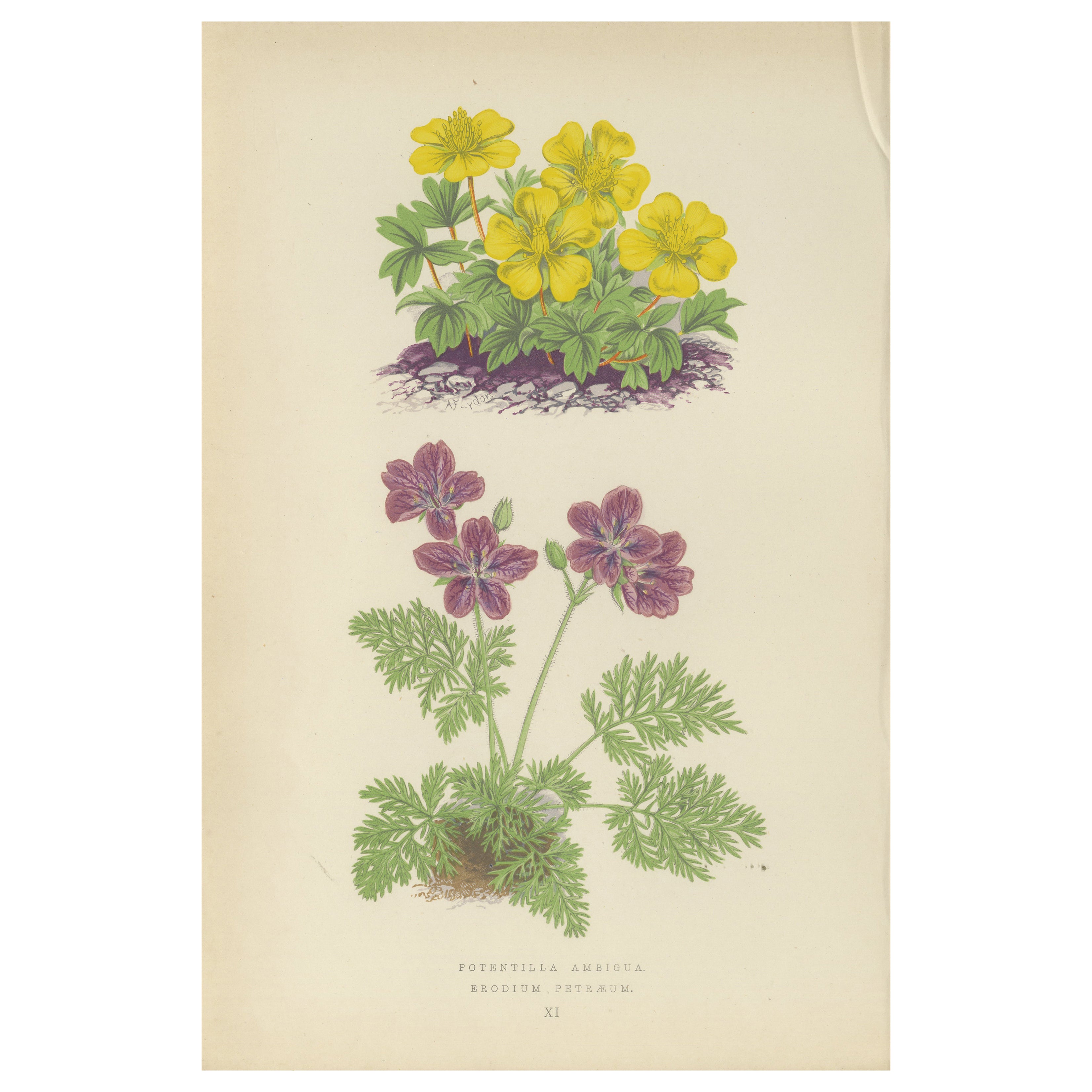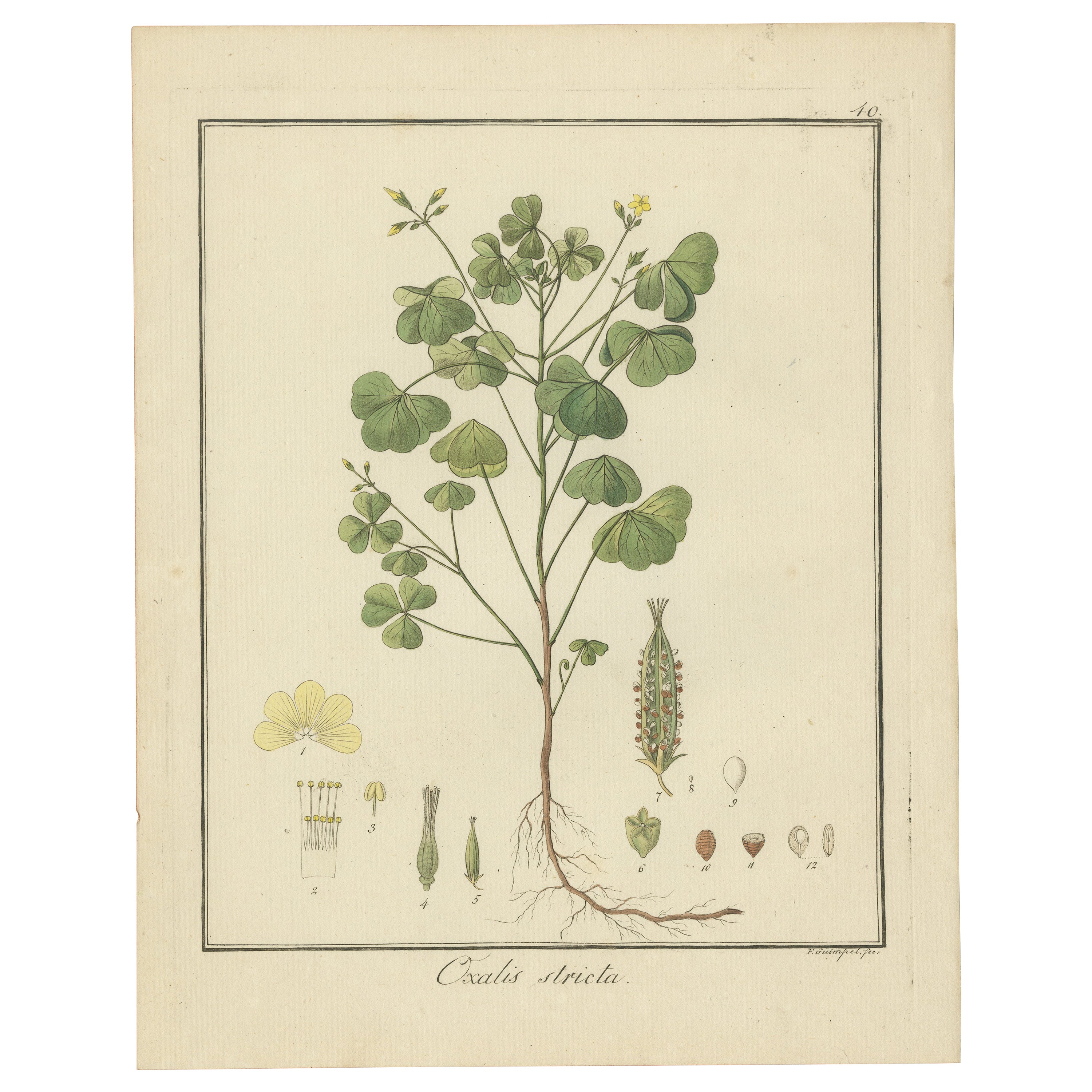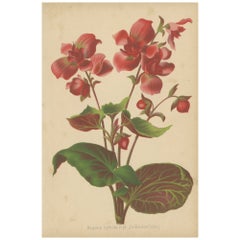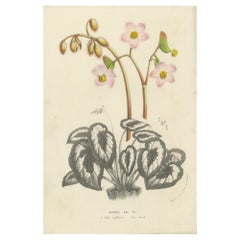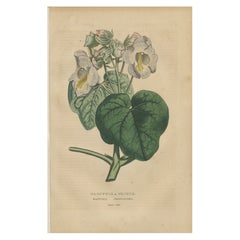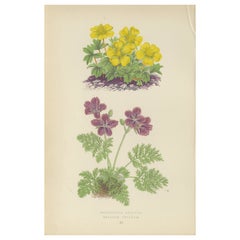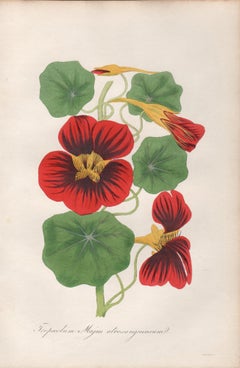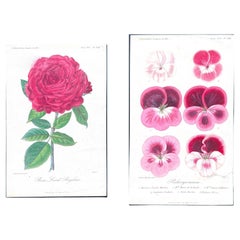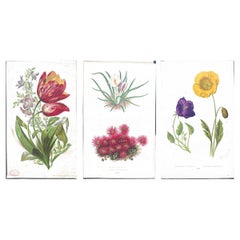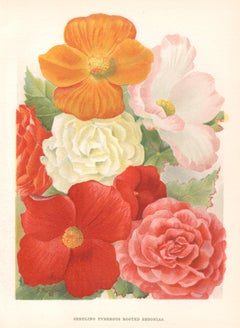Items Similar to Dwarf Crimson Nasturtium ("Tom Thumb"): Hand-Colored Lithograph from 1855
Want more images or videos?
Request additional images or videos from the seller
1 of 6
Dwarf Crimson Nasturtium ("Tom Thumb"): Hand-Colored Lithograph from 1855
$229.56
$286.9520% Off
£169.76
£212.2020% Off
€192
€24020% Off
CA$317.68
CA$397.1020% Off
A$353.72
A$442.1520% Off
CHF 184.07
CHF 230.0920% Off
MX$4,269.32
MX$5,336.6520% Off
NOK 2,308.39
NOK 2,885.4920% Off
SEK 2,180.42
SEK 2,725.5220% Off
DKK 1,462.09
DKK 1,827.6120% Off
About the Item
This lithograph features *Tropaeolum majus atrosanguineum nanum*, commonly known in English as the Dwarf Crimson Nasturtium or "Tom Thumb" Nasturtium. It is a beautiful hand-colored print from *Flore des Serres et des Jardins de l'Europe* by Louis van Houtte, published between 1854 and 1855.
The Dwarf Crimson Nasturtium is characterized by its vibrant red flowers with yellow centers, contrasted with its rounded, green leaves. This variety, being more compact, was often cultivated as an ornamental plant in gardens and balconies, valued for its ease of growth and striking color. The plant is also notable for its edible flowers, which have a peppery flavor and are often used in salads and garnishes.
The lithograph is finely detailed, capturing the lush texture of the leaves and the vivid colors of the blossoms, enhanced by hand coloring. Like other prints in this collection, it has a fold through the center, a typical feature from its original inclusion in Van Houtte’s bound volumes. Despite the fold, the artwork remains a stunning example of mid-19th-century botanical illustration.
Louis van Houtte (1810–1876) was a significant 19th-century Belgian horticulturist and nurseryman, playing a pivotal role in the advancement of botanical gardens and plant collecting throughout Europe. His nursery and botanical publications left a lasting impact on the world of horticulture.
Van Houtte began his professional life working in commerce, but after spending time in Brazil and France, he shifted his focus to horticulture. His experiences abroad, especially in Brazil, ignited his passion for exotic plants, which became central to his work.
In 1839, he established a horticultural nursery in Ghent, Belgium, which eventually grew to be the largest in Europe. The nursery spanned several acres and specialized in growing and distributing rare and exotic plants. Van Houtte’s vast knowledge of plants, combined with his ability to source them from around the globe, made his nursery a key destination for botanists and collectors.
Van Houtte is most famous for founding and publishing *Flore des Serres et des Jardins de l'Europe* (Flowers of the Greenhouses and Gardens of Europe), a celebrated horticultural journal that was published from 1845 to 1883. The publication was known for its beautifully hand-colored lithographs, which featured a wide variety of plants. To achieve this, Van Houtte collaborated with talented botanical artists such as Pieter de Pannemaeker and François Stroobant, producing detailed and vibrant illustrations that were highly regarded for their accuracy and beauty.
In order to expand his collection of plants, Van Houtte employed plant collectors who traveled to far-flung regions, including South America, Asia, and Africa. These collectors brought back many exotic species, such as orchids, palms, and other rare flowering plants, which were then documented and illustrated in *Flore des Serres*.
Van Houtte’s nursery became a central hub for introducing and popularizing new plant species in Europe, contributing to the widespread cultivation of exotic plants in gardens and conservatories. His work greatly influenced the ornamental horticulture movement of the Victorian era, particularly among Europe’s upper class, who were fascinated by the beauty and rarity of these exotic species.
In addition to his horticultural pursuits, Van Houtte also played a role in civic affairs. He served as the director of the Ghent Botanic Garden and held key positions within various Belgian horticultural societies. His expertise and contributions earned him significant recognition, and he became a leading figure in the horticultural community of his time.
After his death in 1876, Van Houtte’s legacy endured through his nursery and the continued appreciation of *Flore des Serres*. His contribution to the introduction and documentation of exotic plants has left a lasting mark on horticulture, and his work continues to be revered for both its scientific and artistic value.
Louis van Houtte's work represents an important era in European horticulture, marked by a combination of botanical exploration, artistic excellence, and a deep appreciation for the beauty of plants. His publications remain some of the finest examples of 19th-century botanical art and knowledge.
- Dimensions:Height: 13 in (33 cm)Width: 9.65 in (24.5 cm)Depth: 0 in (0.02 mm)
- Materials and Techniques:
- Period:
- Date of Manufacture:1855
- Condition:The condition of this genuine antique is good, given age, with the central fold line being a characteristic of its original publication. General age-related toning and/or occasional minor defects from handling.
- Seller Location:Langweer, NL
- Reference Number:Seller: BG-13748-641stDibs: LU3054341526372
About the Seller
5.0
Recognized Seller
These prestigious sellers are industry leaders and represent the highest echelon for item quality and design.
Platinum Seller
Premium sellers with a 4.7+ rating and 24-hour response times
Established in 2009
1stDibs seller since 2017
2,588 sales on 1stDibs
Typical response time: <1 hour
- ShippingRetrieving quote...Shipping from: Langweer, Netherlands
- Return Policy
Authenticity Guarantee
In the unlikely event there’s an issue with an item’s authenticity, contact us within 1 year for a full refund. DetailsMoney-Back Guarantee
If your item is not as described, is damaged in transit, or does not arrive, contact us within 7 days for a full refund. Details24-Hour Cancellation
You have a 24-hour grace period in which to reconsider your purchase, with no questions asked.Vetted Professional Sellers
Our world-class sellers must adhere to strict standards for service and quality, maintaining the integrity of our listings.Price-Match Guarantee
If you find that a seller listed the same item for a lower price elsewhere, we’ll match it.Trusted Global Delivery
Our best-in-class carrier network provides specialized shipping options worldwide, including custom delivery.More From This Seller
View AllHybrid Begonia Botanical Illustration by Louis van Houtte, 19th Century
Located in Langweer, NL
Hybrid Begonia Botanical Illustration by Louis van Houtte, 19th Century
This illustration depicts a Begonia hybrida, commonly referred to as Hybrid Begonia.
The species name sugge...
Category
Antique 1850s Prints
Materials
Paper
$105 Sale Price
20% Off
Botanical Illustration of Begonia Rex with Flowers, 1854-1855 Lithograph Print
Located in Langweer, NL
Botanical Illustration of Begonia rex with Flowers, 1854-1855 Lithograph Print
This exquisite lithograph with original hand coloring features the plant Begonia rex, commonly known i...
Category
Antique 1850s Prints
Materials
Paper
$133 Sale Price
20% Off
Martynia Proboscidea (Unicorn Plant) – Hand-Colored Botanical Engraving, ca.1825
Located in Langweer, NL
Martynia Proboscidea (Unicorn Plant) – Hand-Colored Botanical Engraving by Desmares, circa 1825
Description: This original hand-colored copperplate engraving depicts *Martynia prob...
Category
Antique 1820s Prints
Materials
Paper
$86 Sale Price
20% Off
Yellow Cinquefoil and Rock Cranesbill, hand-coloured botanical print, 1874
Located in Langweer, NL
Yellow Cinquefoil and Rock Cranesbill, hand-coloured botanical print, 1874
This vibrant hand-coloured botanical print from 1874 features two beautifully contrasted alpine plants: Po...
Category
Antique 1870s Prints
Materials
Paper
Hand-Colored Engraving of Yellow Wood Sorrel, Oxalis stricta, by Guimpel, 1819
Located in Langweer, NL
The image depicts an original old hand-colored copperplate engraving of the plant "Oxalis stricta", commonly known as yellow wood sorrel or common yellow oxalis. This botanical illus...
Category
Antique 1810s Prints
Materials
Paper
$306 Sale Price
20% Off
Alpine Violet and Red Calandrinia hand coloured botanical print 1874
Located in Langweer, NL
Alpine Violet and Red Calandrinia hand coloured botanical print 1874
This finely hand coloured botanical print from 1874 features two striking alpine plants, Viola obliqua and Calan...
Category
Antique 1870s Prints
Materials
Paper
You May Also Like
Tropaeolum Majus Atrosanguineum, antique botanical nasturtium flower engraving
Located in Melbourne, Victoria
Engraving with original hand-colouring. 1834. 230mm by 155mm. From Paxton's 'Magazine of botany and register of flowering plants' by Sir Joseph Paxton.
Category
Mid-19th Century Naturalistic More Prints
Materials
Engraving
Original Antique Botanical Lithograph of Pelargoniums, 1851–“Capitaine Lechaix”
Located in Fukuoka, JP
Published in L’Horticulteur Français
A rare and richly colored antique botanical lithograph depicting six varieties of pelargoniums, including the boldly patterned “Capitaine Lechai...
Category
Antique 19th Century French Prints
Materials
Paper
Alpine Avens and Crocus – Original Hand-Colored Botanical Print, 1880s
Located in Fukuoka, JP
Alpine Avens and Crocus – Original Hand-Colored Botanical Print, 1880s
A charming original 19th-century botanical print featuring Alpine Avens (Acaena microphylla) and Crocus boryan...
Category
Antique 19th Century British Prints
Materials
Paper
Begonias, English antique flower botanical chromolithograph, 1896
Located in Melbourne, Victoria
'Seedling tuberous Rooted Begonias'
Antique English flower botanical chromolithograph.
Category
Late 19th Century Naturalistic Still-life Prints
Materials
Lithograph
'Pelargonium Abd-el-Kader' Framed Botanical Print 1845 Belgium
Located in Meer, VAN
'Pelargonium Abd-el-Kader' framed print from 'Annales de la Societe royale d'agriculture et de botanique de Gand'. 1845, Ghent, Belgium.
A lovely original lithography from the book ...
Category
Antique 19th Century Belgian Decorative Art
Materials
Wood, Paper
20th Century Colorful Graphic or Nasturtiums
Located in Opole, PL
We present you one of the six graphics with depictions of garden plants from the same series.
This graphic is framed in a wooden frame with glass.
Each item from the series is av...
Category
20th Century Prints
Materials
Paper
$191 Sale Price
20% Off
More Ways To Browse
Garden Dwarf
English Iron Bed
Franz Xavier Bergman
Frem Rojle Chair
French Confit Jar
French Opaline Bottle
French Soda
Garden Rabbit
German Cigarette Case
Gio Ponti Display Cabinet
Glass Door Etagere
Glass Ginger Jar
Goat Skin Parchment
Goryeo Celadon
Granite Buddha
Gun Cabinet
Hand Painted Music Boxes
Hay Dining Table
